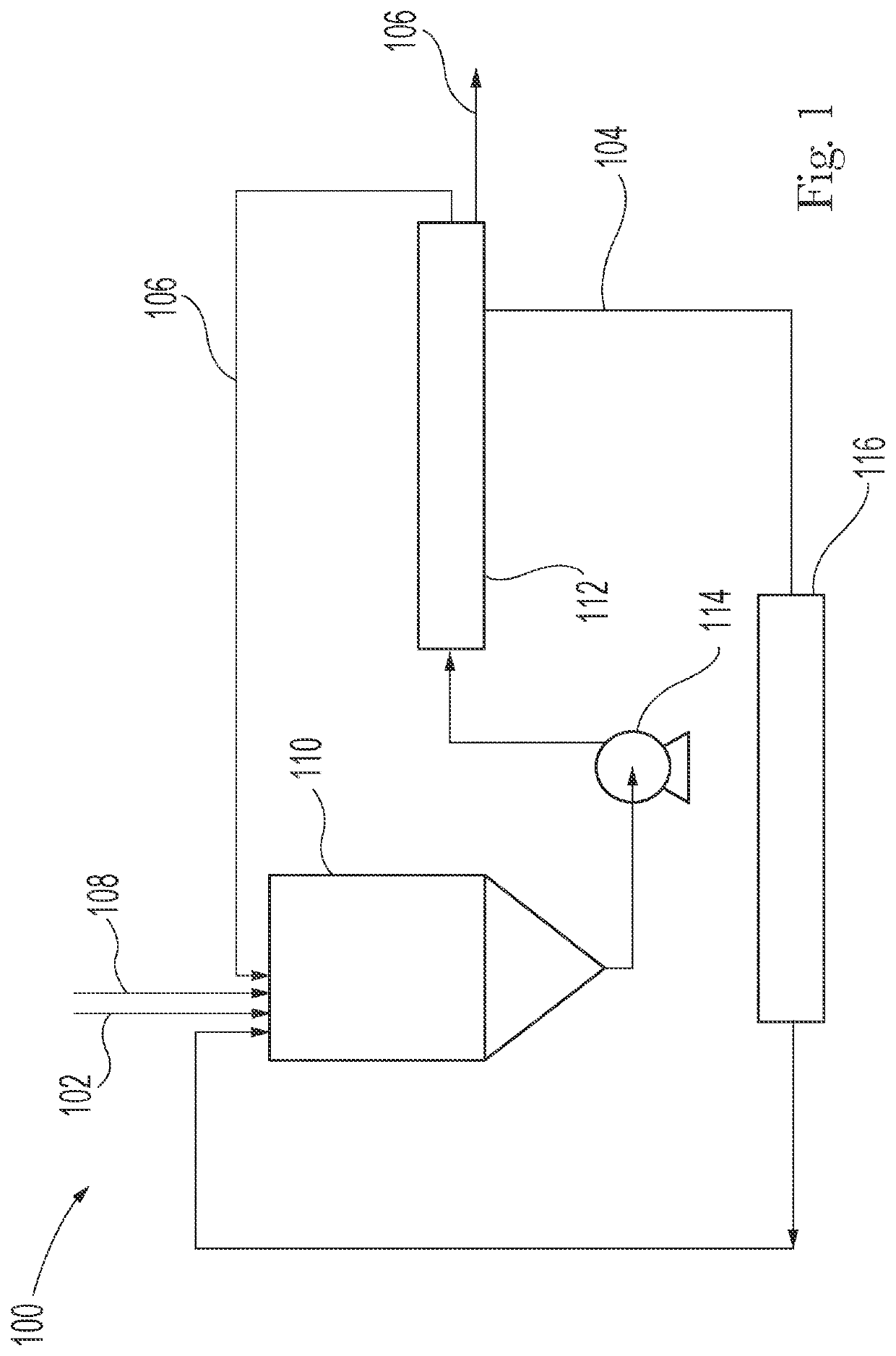Method to remove chemical contaminants
a technology of chemical contaminants and methods, applied in the field of process and equipment for removing contaminants, can solve the problems of high cost of process, high cost of steam, and undesirable 1,4-dioxane, and achieve the effect of reducing the ratio of contaminants
- Summary
- Abstract
- Description
- Claims
- Application Information
AI Technical Summary
Benefits of technology
Problems solved by technology
Method used
Image
Examples
example
[0085]The Nanofilter membrane used was NFS made by Synder Filtration. The filtration was done in a batch process. The composition contained 16.5% alkyl ethoxy sulfate in water and other solvents in water. The initial composition is placed in a feed tank. Next, the composition was circulated through the column containing the 1.8-inch nanofiltration membrane (1.95 m2 / membrane). The feed temperature was approximately 38° C. The feed pressure was 14 Kg / cm2.
[0086]The filtration process produced an initial filtrate and an initial retentate. The retentate was recirculated back to the feed tank. The filtrate containing water and dioxane contaminant was separately collected.
[0087]The flux of water with dioxane achieved was 421 / m2 / hr. The dioxane passage through the membrane was close to 100% as the concentrations analyzed in the feed and filtrate were approximately the same at any given point in time. The surfactant passage was minimal as the filtrate did not produce any foam and foam would ...
PUM
| Property | Measurement | Unit |
|---|---|---|
| weight average molecular weight | aaaaa | aaaaa |
| weight average molecular weight | aaaaa | aaaaa |
| weight average molecular weight | aaaaa | aaaaa |
Abstract
Description
Claims
Application Information
 Login to View More
Login to View More - R&D
- Intellectual Property
- Life Sciences
- Materials
- Tech Scout
- Unparalleled Data Quality
- Higher Quality Content
- 60% Fewer Hallucinations
Browse by: Latest US Patents, China's latest patents, Technical Efficacy Thesaurus, Application Domain, Technology Topic, Popular Technical Reports.
© 2025 PatSnap. All rights reserved.Legal|Privacy policy|Modern Slavery Act Transparency Statement|Sitemap|About US| Contact US: help@patsnap.com



